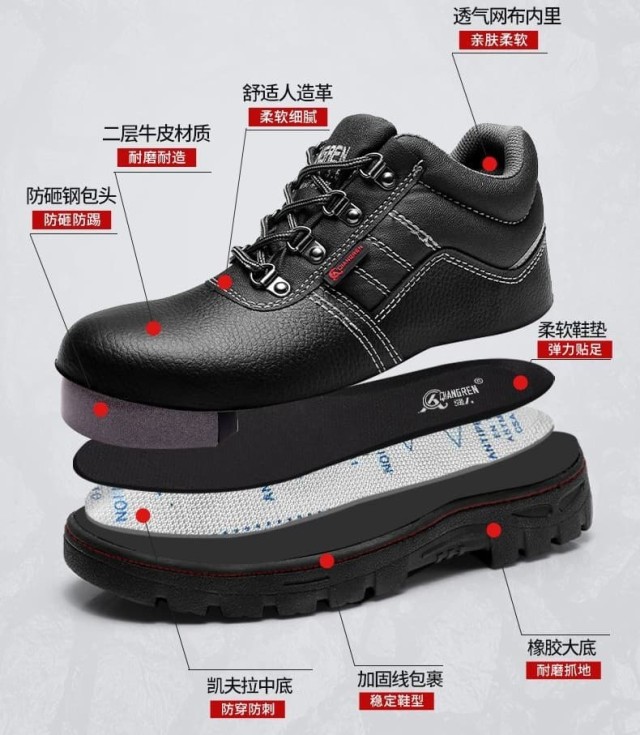Selecting the right work boot midsole isn’t just about comfort—it’s a critical safety decision. The wrong material can lead to fatigue, injuries, or even catastrophic failures in hazardous environments. This guide breaks down how to match midsole technologies to your job’s unique demands, backed by industry standards and material science.
The Science Behind Work Boot Midsoles
How Midsole Materials React to Workplace Stressors
Midsoles absorb shock, distribute pressure, and resist workplace hazards. Common materials like EVA (ethylene-vinyl acetate) offer lightweight cushioning but degrade faster under heavy loads. In contrast, polyurethane retains shape longer but adds weight—a trade-off for jobs requiring prolonged standing.
Key considerations:
- Compression resistance: Polyurethane outperforms EVA in high-impact settings (e.g., construction).
- Chemical exposure: Oilfield workers need oil-resistant TPU (thermoplastic polyurethane) to prevent degradation.
- Temperature stability: Cold storage workers require materials that stay flexible below -20°C.
When a Shank Becomes Non-Negotiable
A steel or composite shank embedded in the midsole prevents flex-related foot fatigue on uneven terrain (e.g., roofing or forestry). ASTM F2413-18 standards mandate shanks for puncture resistance in high-risk environments.
Industry-Specific Midsole Requirements
Construction vs. Manufacturing: Contrasting Needs
- Construction: Prioritize shock absorption (polyurethane or hybrid midsoles) and metatarsal guards (ASTM F2413-18).
- Manufacturing: Slip-resistant EVA with electrical hazard protection (ASTM F2892-18) suits factory floors.
Extreme Environments: Case Studies
- Oil rigs: TPU midsoles resist hydrocarbons and provide stability on metal grates.
- Cold storage: Thermal-insulated midsoles with aerogel layers prevent heat loss without sacrificing flexibility.
Beyond EVA and Polyurethane
TPU and Hybrid Materials: Next-Gen Durability
TPU midsoles combine oil resistance with high rebound, ideal for heavy equipment operators. Hybrid designs (e.g., EVA-TPU blends) balance comfort and longevity, reducing replacement cycles by ~30% compared to traditional materials.
Military Standards for Puncture Resistance
Military-grade boots often use multi-density midsoles with Kevlar layers, exceeding ASTM F2413-18 puncture resistance. These disperse pressure from sharp objects while maintaining agility.
Put Science to Work: Partner with 3515 for Your Safety Footwear Needs
Whether you’re equipping a construction crew or outfitting oilfield teams, 3515’s expertise ensures your footwear meets exacting safety and comfort demands. Our range includes ASTM-compliant designs tailored to your industry’s hazards—because the right midsole shouldn’t be a compromise.
Ready to upgrade your safety footwear? Contact 3515 to discuss custom solutions for bulk orders.
Products You Might Be Looking For:
View steel toe work boots for construction
Explore durable safety boots for heavy-duty work
Check out versatile steel toe safety boots
Browse high-quality customizable safety boots
Related Products
- Wholesale Durable 6-Inch Work Boots | Custom & Private Label Manufacturer
- Durable Leather Work Boots Wholesale Manufacturer & Custom Factory
- Wholesale Slip-On Safety Boots Manufacturer - Custom Puncture-Proof & Steel Toe
- Wholesale Durable Safety Boots | Custom Steel Toe & Puncture-Resistant Manufacturing
- Custom Wholesale Leather Safety Boots Direct Factory Manufacturing
Related Articles
- How Lace-Up Work Boots Solve Workplace Safety Challenges
- How Work Boot Components Address Safety and Comfort in High-Risk Jobs
- How to Solve Work Boot Discomfort Without Sacrificing Safety or Durability
- How Work Boot Upper Materials Prevent Foot Injuries and Boost Comfort
- How Work Boot Materials and Technologies Shield Against Cold Weather Hazards



















